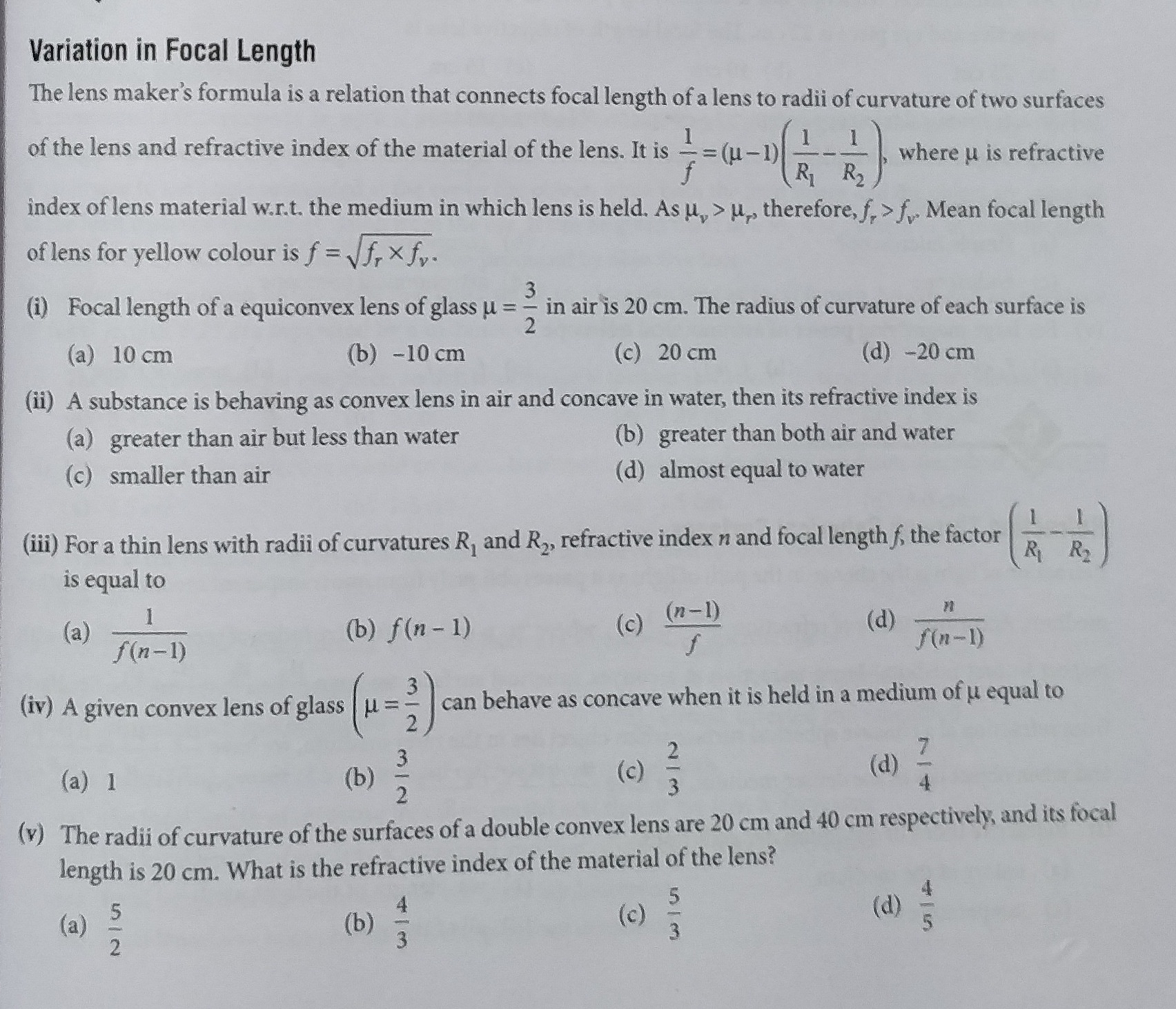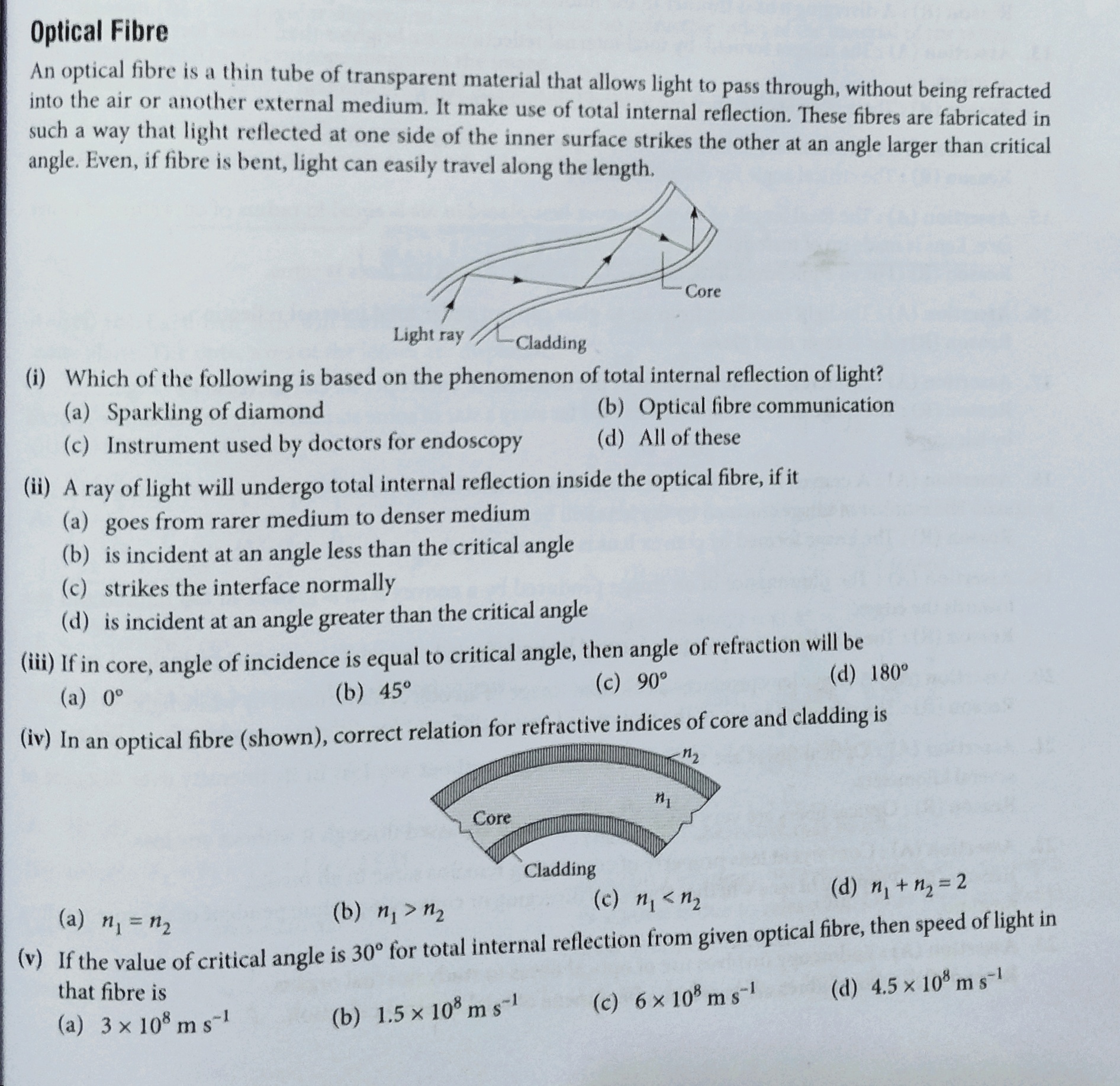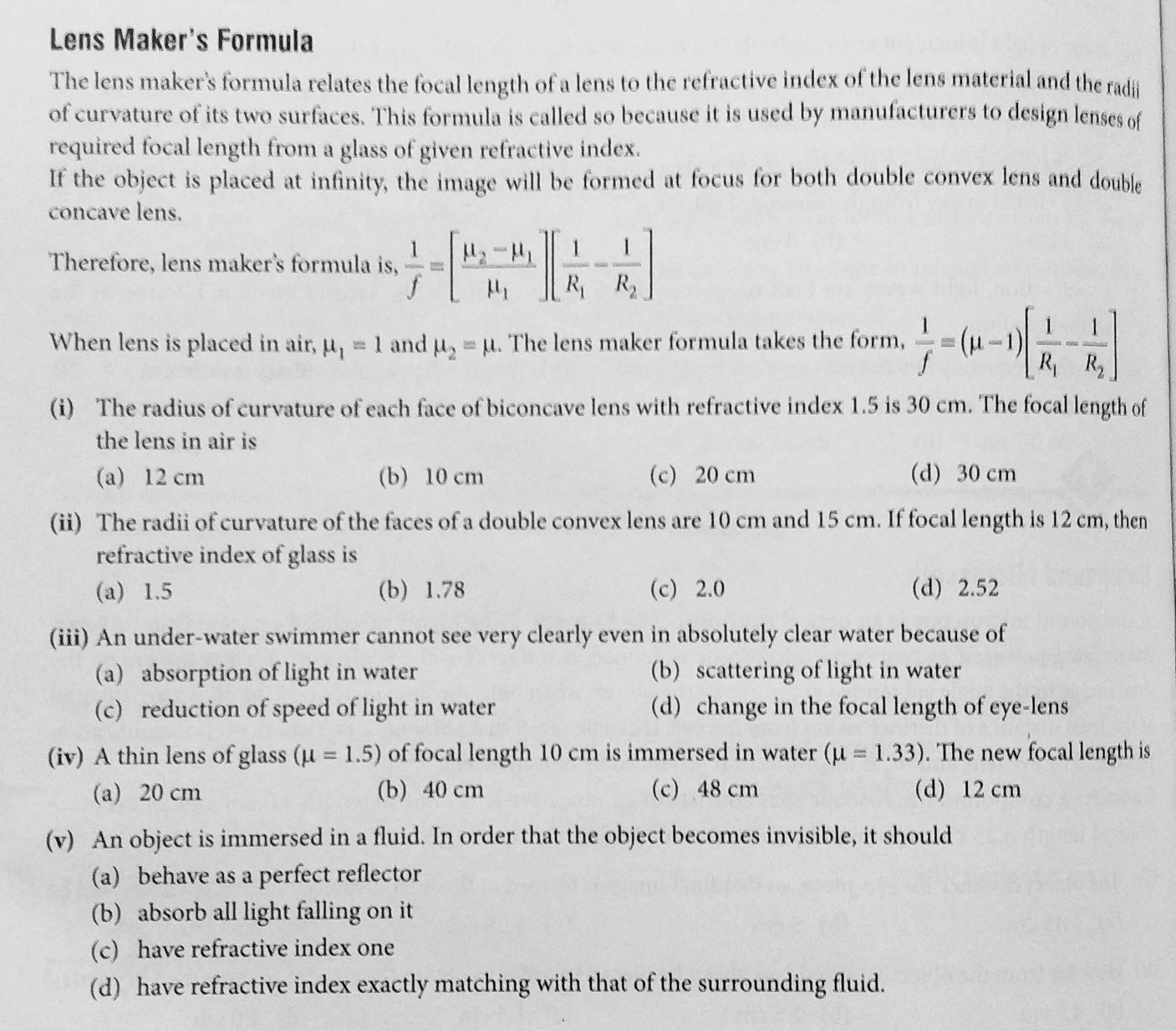Case study based questions-
1. Total internal reflection –
Total internal reflection is the phenomenon of reflection of light into denser medium at the interface of denser medium with rarer medium . For this phenomenon to occur necessary condition is that light must move from denser to rarer and angle of incidence in denser medium must be greater than critical angle for the pair of media in contact. Critical angle depends on nature of medium and wavelength of light . We can show that µ=1/sinC (where C is the critical angle).
(i) critical angle for glass air interface , where µ for glass is 3/2 , is (a)41.80 (b) 600 (c)300 (d)150 .
(ii)Critical angle for water air interface is 48.60 , then what is the refractive index of water/(a)1 (b)3/2 (c)4/3 (d)3/4
(iii) critical angle for air water interface for violet colour is 490 its value for red colour will be (a)490(b)500 (c)480 (d)can’t say.
(iv) Which of the following is not due to total internal reflection?(a) working of optical fibre (b)difference between real depth and apparent depth of a pound.(c)mirage on hot summer day (d) brilliance of diamond.
(v) critical angle of glass is θ1 and that of the water is θ2 critical angle for water and glass surface would be (µg > µw) (a) less than θ2 (b) between θ1 and θ2 (c)greater then θ2 (d)less than θ1 .
2. Power of a lens-
Power (P) of a lens is given as the reciprocal of focal length (P=1/f)where f should be in meter and P is in Diopter . for convex power is positive and concave power is –ve. When two or more lenses are kept in contact then power of the combined lens is given as P= P1 + P2+P3 …….
(I) A convex and a concave lens is separated by distance d are then put in contact then the focal length of the combination (a) becomes 0 (b) remain the same (iii) decreases (iv)increases.
(ii)The two lenses of power +1.5D and +1.0D are placed in contact then the effective power of the combination will be (a)2.5D (b)1.5 D (c) 0.5D (d)3.25D .
(iii) If the power of the lens is 5D then what is the focal length of the lens?(a)10cm (b) 20cm (c)15cm (d) 5cm
(iv)Two thin lens of focal length +10cm and -5cm are kept in contact , the power of the combination is ? (a)-10D (b)-20D (c)10D (d)15D .
(v)A convex lens of focal length 25cm is placed coaxially in contact with a concave lens of focal length 20cm the system will be ; (a) converging in nature (ii) diverging in nature (c) can be converging or diverging (d) None of the above.
3.

4. Refraction through a prism
A prism is a portion of a transparent medium bounded by two planes face inclined to each other at a suitable angle . A ray of light suffers two refraction on passing through a prism and hence deviates through a certain angle from its original path . The angle of deviation of a prism is ɗ = (µ-1 )A , through which a ray deviates on passing through a thin prism of small refracting angle A . If µ is the refractive index of the material of the prism then the prism formula is µ = sin(A+ɗm/2)/sin(A/2).
(i) For which colour , angle of deviation is minimum ?(a) Red (b)yellow (c) violet (d) blue.
(ii) When white light moves through vacuum (a) all colours have same speed (b)different colours have different speed (c) violet has more speed then red (d)red has more speed then violet.
(iii)The deviation through a prism is maximum when angle of incidence is (a)450 (b) 700 (c)900(d)600 .
(iv)What is the deviation produced by a prism of angle 60 ? (µ=1.644) (a)3.840 (b)4.595(c)7.259(d)1.252.
(v) A ray of light falling at an angle of 500 is refracted through a prism and suffers minimum deviation . If the angle of prism is 600, then the angle of minimum deviation is (a) 450 (b) 750 (c)500 (d)400 .
5.

6.
